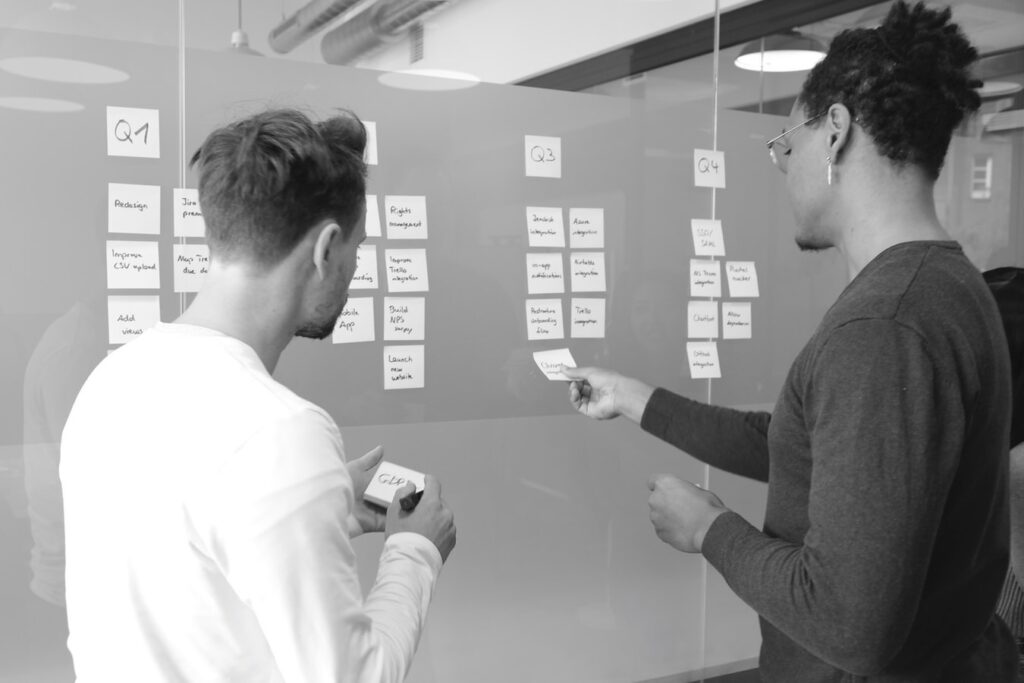Why Release Train Engineers Must Prioritize Relationship Building
One of the key tenets that makes enterprise agility possible is that everyone involved in an organization can and should act as a leader in some sense. Various roles obviously take on more leadership responsibilities, but if you’re doing things right, the mindset behind effective leadership applies to every member of your organization.
We will be presenting a series of articles that break down how that mindset and the common application of leadership skills manifests in various agile roles. We’ll be using terminology specific to SAFe as a well-known framework for agile at an enterprise scale, but most scaling frameworks include roles that parallel those we’ll be discussing.
In this article, we’re focusing on the Agile Release Train Engineer.
The RTE’s role and responsibilities
Most organizations that practice Agile use Scrum or Scrumban. Therefore, most are familiar with the Scrum Master. They are responsible for ensuring that each agile team follows the Scrum procedures effectively and that impediments to the team’s progress are removed. They also work with the team to establish commitments for features or stories completed each sprint. They facilitate meetings like the daily standup and the sprint retrospective to accomplish this.
When organizations scale their agile practice beyond a handful of teams, it becomes necessary for someone to assume the role of Scrum Master for a team of teams. In SAFe terminology, that is the Release Train Engineer (RTE). The RTE works directly with the scrum masters of each team to help establish and maintain good agile practices and help remove impediments as needed. They also partner with the Program Managers to develop feature commitments for each planning increment (PI). They typically facilitate the important PI planning meeting and either facilitate or attend other ceremonies throughout the PI, such as backlog grooming sessions.
Right in line with the Agile focus on collaboration and communication, the RTE must be, above all else, a builder of relationships.
How and why RTEs build relationships
In a scaled Agile environment, success is a product of collaboration and trust. When either or both of these factors are missing, agility becomes unsustainable. But, of course, cooperation and trust don’t just happen, especially if agility is a new concept to one or more parties within the organization.
That’s why individuals filling roles like the RTE must focus on building and maintaining positive working relationships with people across the organization. Here are some examples of how and why that’s done:
The RTE and the executives
In some ways, the RTE has one of the most challenging roles in the organization because they need to interact effectively with people at so many levels.
One of the key ceremonies the RTE facilitates is PI planning—a sort of scaled-up sprint planning meeting that usually occurs every quarter or so. A portion of that meeting includes what’s called the Management Review.
This meeting can include members of the C-suite, senior vice presidents, vice presidents, and directors. In many cases, these individuals are not as closely connected to the day-to-day operations or Agile practices. As a result, they may have strong opinions about what should be accomplished during the PI (the scope) or how quickly things should get done, and at what cost.
And, of course, they have the authority to make decisions or even demands around these factors. So, as the facilitator of the Management Review meeting—and the person responsible for removing impediments to the teams’ ability to maintain agility throughout their day-to-day activities—they may be put in the challenging position of needing to manage expectations of executives and steer their decisions strategically to a mutually beneficial conclusion.
This is a coaching/teaching role directed at “students” who don’t view themselves as such. Establishing solid and trusting relationships with the executives will make this process far easier and more effective for the RTE and lead to better outcomes.
A practical and proven method for accomplishing this is to set up regular brief meetings with executives (perhaps weekly or biweekly) to check in on the progress of the Agile Release Train (ART), review the executive’s expectations, and answer any questions they may have. Transparency and honesty are essential as they will reinforce the culture of continuous improvement until the executive can fully buy into the concept.
The RTE and the Product Manager
An RTE needs to be aligned with their product manager(s) and understand the product manager’s role fully. The volume and the complexity of the values they’re trying to deliver, their goals, and their objectives. Again, this doesn’t happen overnight, and it doesn’t happen accidentally. It requires empathy, active listening, and time intentionally set aside to cultivate an understanding and alignment.
In other words, it requires relationship building.
Here is an example of where building this relationship can benefit the entire ART: in practice, most product managers don’t understand how to produce a roadmap. They are not adept at pulling together the information and making the required decisions for good PI planning. But, understanding these things can significantly enhance their skill set. So, an RTE who’s established a strong relationship with their product manager(s) will be able to coach and teach them these skills effectively. And, the more the product manager understands the PI planning process and can contribute their ideas and recommendations to the mix, the higher the quality of the entire ART will become.
The RTE and the Scrum Master

In all these cases, relationships need to be built if the RTE and the ART are to succeed. While there’s an opportunity to do this while facilitating or attending various routine ceremonies, one-on-one conversations—both formal and informal—are vital to the process.
A good RTE will coach their scrum masters without making it feel condescending or arrogant. They will need to ensure the scrum masters coach and build relationships with their teams, not just facilitating ceremonies.
Since the RTE is essentially a scrum master at a larger scale, the best way to accomplish this is to lead by example.
The RTE and the teams
Finally, an effective RTE needs to build quality relationships at the team level.
Although they will not generally be interacting with individual team members often on a day-to-day cadence, they should make a point to attend some of the routine team-level ceremonies, if only as an observer. Being visible to the team and making a concerted effort to be approachable and supportive—while avoiding overshadowing or countering the team’s scrum master—will go a long way in supporting each team’s commitment to completing the tasks they’ve taken on and to continuous improvement.
Some keys to building relationships at this level are straightforward but essential:
- Learn, remember, and use people’s names.
- Get to know them on an appropriately personal level and make sure some conversations express that personal interest.
- Make a point of congratulating the teams personally on wins and expressing enthusiasm and encouragement when a strong effort is made, even if it falls short.
Many RTEs have found the Gemba Walk to be an effective means of accomplishing this.
To dive deeper into how an RTE can successfully lead their ARTs in today’s remote or hybrid environment, we recommend The RTE Guide to Remote Delivery.




